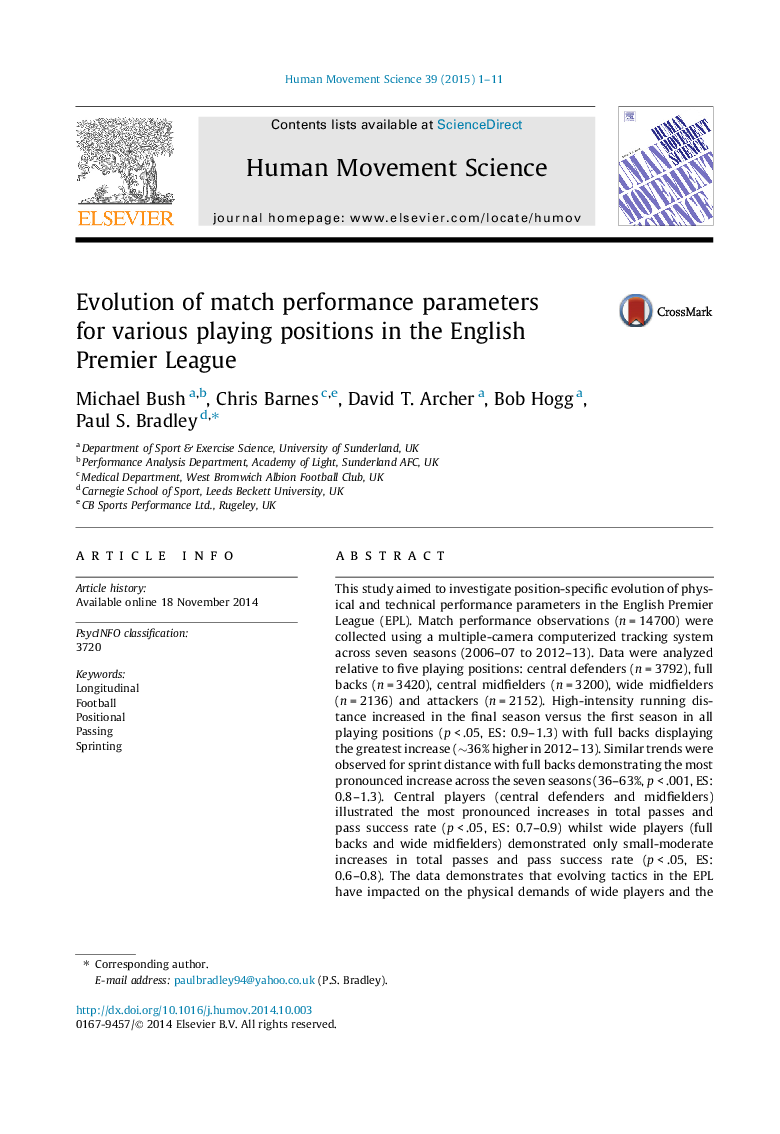| Article ID | Journal | Published Year | Pages | File Type |
|---|---|---|---|---|
| 928284 | Human Movement Science | 2015 | 11 Pages |
•Wide positions have increased high-intensity running to a greater extent between 2006–07 and 2012–13.•Central players displayed pronounced increases in passing variables over the same period.•These evolutionary trends could be attributed to tactical modifications.•These findings provide benchmark requirements of modern EPL players.
This study aimed to investigate position-specific evolution of physical and technical performance parameters in the English Premier League (EPL). Match performance observations (n = 14700) were collected using a multiple-camera computerized tracking system across seven seasons (2006–07 to 2012–13). Data were analyzed relative to five playing positions: central defenders (n = 3792), full backs (n = 3420), central midfielders (n = 3200), wide midfielders (n = 2136) and attackers (n = 2152). High-intensity running distance increased in the final season versus the first season in all playing positions (p < .05, ES: 0.9–1.3) with full backs displaying the greatest increase (∼36% higher in 2012–13). Similar trends were observed for sprint distance with full backs demonstrating the most pronounced increase across the seven seasons (36–63%, p < .001, ES: 0.8–1.3). Central players (central defenders and midfielders) illustrated the most pronounced increases in total passes and pass success rate (p < .05, ES: 0.7–0.9) whilst wide players (full backs and wide midfielders) demonstrated only small-moderate increases in total passes and pass success rate (p < .05, ES: 0.6–0.8). The data demonstrates that evolving tactics in the EPL have impacted on the physical demands of wide players and the technical requirements of central players. These findings could be used for talent identification or position-specific physical and technical training.
